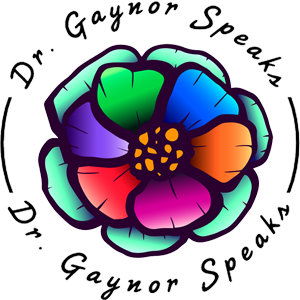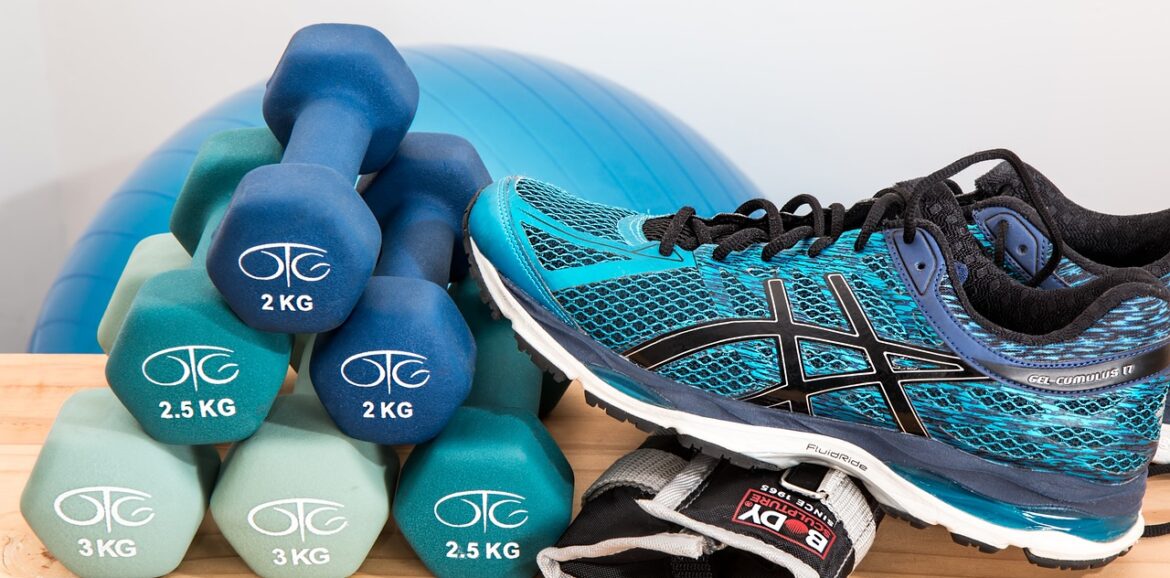Did you know that exercise can have a big impact on our mental health? It’s true! While we often think of exercise in terms of physical fitness, research shows that it can do wonders in our fast-paced, stress-filled lives. Taking care of our mental health is as important as looking after our physical well-being.
Let’s explore the connection between exercise and mental well-being with the hope of providing you with valuable insights and practical tips for integrating exercise into your routine to support your overall health. So grab a glass of water and get ready to learn more about the amazing benefits of exercise for your mental health.
Exercise and Depression:
According to Harvard Health, regular exercise can reduce the risk of major depression and may even help prevent it. Exercise has been found to stimulate the production of endorphins, which are natural painkillers and mood elevators. This release of endorphins can lead to a boost in mood and a reduction in depressive symptoms.
Here are three exercises that can help with depression:
- Aerobic Exercise: Engaging in aerobic exercises such as running, cycling, swimming, dancing, or brisk walking can be beneficial for managing depression. These activities increase your heart rate and promote the release of endorphins, which are known as “feel-good” hormones. Regular aerobic exercise has been shown to improve mood, reduce symptoms of depression, and boost overall well-being.
- Yoga: Practicing yoga combines physical movement, breath control, and meditation, making it an effective exercise for alleviating depressive symptoms. Yoga has been found to reduce stress levels, promote relaxation, and improve mental focus. Through its mind-body connection, yoga helps calm the mind and enhance self-awareness, which can positively impact managing depression.
- Strength Training: Incorporating strength training exercises such as weightlifting or bodyweight exercises can also benefit individuals with depression. Strength training improves physical strength and stamina and boosts self-esteem and self-confidence. Additionally, it increases the production of endorphins, leading to improved mood and reduced symptoms of depression.
Dr. Brianna Gaynor’s Note: It’s important to note that exercise should be seen as a complementary approach and may not replace professional treatment for depression. It’s always recommended to consult with a healthcare provider or mental health professional for personalized advice and guidance.
Exercise and Anxiety:
Incorporating exercise into your routine may be beneficial if you struggle with anxiety. Exercise has been shown to decrease symptoms of anxiety and stress. When we exercise, our bodies release stress hormones, helping to alleviate the tension we may feel. Additionally, exercise provides a distraction from our worries and allows us to focus on the physical activity at hand.
Here are three exercises that can help alleviate anxiety:
- Yoga: Yoga is an excellent practice for reducing stress and anxiety. It combines physical postures with controlled breathing and encourages mindfulness and mental focus. Studies have shown regular yoga can reduce anxiety and stress symptoms, improve mood, and enhance overall well-being.
- Cardiovascular Exercise: Aerobic exercise, such as running, cycling, or swimming, can be highly effective in reducing anxiety symptoms. Cardiovascular exercise increases blood flow to the brain. It stimulates the production of endorphins, leading to a boost in mood and a reduction in anxiety.
- Mindful Breathing: Mindful breathing is a simple yet powerful exercise that can be done anywhere, anytime. To practice mindful or conscious breathing, take a deep breath and hold it for a few seconds. Slowly exhale and focus on the sensation of the air passing through your nostrils. Repeat this exercise for several minutes, letting your mind relax and let go of any anxious thoughts or feelings.
Dr. Brianna Gaynor’s Note: Remember, talking to a healthcare provider before beginning any new exercise routine is always a good idea, especially if you have any underlying health conditions. They can provide personalized advice and recommendations based on your specific needs.
Exercise and Cognitive Function:
Beyond its impact on mood, exercise has also positively affected cognitive function. Regular exercise has been linked to improvements in memory and thinking skills. In fact, the positive effect of exercise on the brain has been compared to that of a natural nootropic. Physical activity increases blood flow to the brain. It stimulates the growth of new brain cells, leading to enhanced cognitive abilities.
Cognitive function is a term used in the medical field to describe how our brain helps us think, learn, and remember things. It’s like an engine inside our head that helps us process information and make sense of the world around us.
Think of your brain as a supercomputer that controls everything you do. When you read a book, solve a math problem, or learn something new, your brain is hard at work. It helps you understand, think, and remember what you learn.
Different parts of your brain have different jobs. For example, your frontal lobe helps with planning and decision-making, while your hippocampus helps with memory. It’s like having a team of superheroes in your head (more on this in a later blog), each one with a special power to help you learn and grow.
Just like we exercise our bodies to stay fit, we can also exercise our brains to make them strong. When we play games, solve puzzles, or learn new things, we give our brains a workout. This helps improve our cognitive function and makes our brains even smarter.
It’s also important to give our brains the right fuel. Eating healthy foods, getting enough sleep, and staying active are all good for our brains. Just like a car needs good fuel to run well, our brain needs healthy habits to perform at its best. We can keep our cognitive function strong by feeding our brains with knowledge, exercise, and healthy habits.
Exercise and Sleep:
If you’ve ever struggled with sleep, you may find relief in exercise. Harvard Health reports that regular exercise can improve the quality of your sleep. Engaging in physical activity promotes the release of endorphins, reducing the levels of stress hormones in your body. This relaxation can, in turn, lead to better sleep.
Here are three ways to help a person go to sleep when they can’t:
- Relaxation Techniques: Relaxation techniques can be extremely helpful in calming the mind and body before bed. Techniques such as deep breathing exercises, progressive muscle relaxation, visualization, and meditation can help reduce stress, anxiety, and nervousness. It’s recommended to practice relaxation techniques daily before going to bed to promote better sleep.
- Establish a Sleep Routine: Going to bed and waking up at the same time every day can help regulate the body’s natural sleep-wake cycle. Establishing a sleep routine can include a pre-sleep ritual, such as taking a warm bath, reading a book, or listening to calming music. A sleep routine can signal to the body that it’s time for sleep and help induce relaxation, leading to better sleep quality.
- Avoid Stimulants: Staying away from stimulants such as caffeine, nicotine, and alcohol can greatly improve the ability to fall asleep. These substances can interfere with the body’s sleep cycle and lead to insomnia. It’s best to avoid consuming them at least 4-6 hours before bedtime.
Progressive Muscle Relaxation (PMR)
Of the examples above, Progressive Muscle Relaxation (PMR) and visualization are the two most helpful for restful sleep. PMR is a relaxation technique that involves systematically tensing and then relaxing different muscle groups in the body. The practice was developed by American physician Edmund Jacobson in the 1920s as a stress management technique. While visualization, also known as guided imagery, is a relaxation technique that involves creating vivid mental images or scenarios that evoke positive feelings, sensations, or emotions. It is based on the principle that the mind and body are interconnected and that we can stimulate physical and emotional responses by visualizing specific images.
To perform progressive muscle relaxation, you can follow these steps:
- Find a quiet and comfortable place: Choose a location where you can relax without distractions.
- Start with deep breathing: Take a few deep breaths to help relax your body and mind.
- Begin tensing and relaxing muscles: Start with a specific group of muscles, such as the muscles in your hands. Clench the muscles and hold the tension for a few seconds, then release and relax the muscles completely. Pay attention to the sensation of tension and relaxation in the muscles.
- Move through different muscle groups: Continue tensing and relaxing various muscle groups, gradually working your way up or down the body. Common muscle groups include hands, forearms, biceps, shoulders, neck, face, chest, abdomen, buttocks, thighs, calves, and feet. Remember to focus on one muscle group at a time.
- Take your time: Spend 10-15 seconds tensing each muscle group and then relaxing them around 20-30 seconds.
- Maintain awareness: Throughout the process, maintain awareness of the difference between muscle tension and relaxation. Focus on the sensation of letting go of tension and allowing the muscles to become loose and relaxed.
- Go at your own pace: Progress through the muscle groups at a pace that feels comfortable for you.
- Practice regularly: It is recommended to practice progressive muscle relaxation regularly to reap the benefits of this exercise. Aim for at least a few minutes of practice per day.
By systematically tensing and relaxing muscle groups, progressive muscle relaxation helps reduce muscle tension, relieve stress, and promote deep relaxation. It can be a helpful tool for managing anxiety, promoting better sleep, and enhancing overall well-being.
Visualization:
To practice visualization, you can follow these steps:
- Find a quiet and comfortable place: Choose a quiet location where you won’t be interrupted and can relax.
- Get into a comfortable position: Sit or lie down in a comfortable position with your eyes closed.
- Deep breathing: Take a few deep breaths to help relax your body and mind.
- Choose a scene or scenario: Visualize a scene or scenario that makes you feel calm, relaxed, and happy. It can be a real or imaginary place, memory, or experience. Some examples include a peaceful nature scene, a relaxing spa, or a happy childhood memory.
- Engage your senses: Bring your visualization to life by engaging all of your senses. Imagine what you see, hear, smell, and feel in this scene. For example, if you’re visualizing a beach scene, imagine the sound of the waves, the feel of the sand under your feet, the warmth of the sun on your skin, and the smell of the ocean.
- Stay focused: Keep your attention focused on the details of your visualization. If your mind starts to wander, gently guide it back to your visualization.
- Take your time: Spend around 5-10 minutes visualizing your scene or scenario. If you find it hard to focus, try practicing with a guided visualization recording or app.
Visualization can have a powerful positive impact on both mental and physical health. It is often used as a tool to reduce stress, anxiety, and negative thoughts, and it can also help improve mood, focus, and emotional well-being.
Dr. Brianna Gaynor’s Note: It’s important to note that chronic insomnia or sleep disorders may require medical attention and consultation with a healthcare provider or sleep specialist. If difficulty with sleep persists, it’s always recommended to consult with a healthcare professional or therapist for guidance on implementing progressive muscle relaxation or visualization if you have any underlying physical or mental health conditions.
Dr. Gaynor Speaks:
Research shows that exercise has a profound impact on mental health. From reducing the risk of depression to alleviating anxiety symptoms, exercise offers many benefits for our well-being. Not only does exercise improve our mood, but it also enhances cognitive function and sleep quality.
So, if you want to improve your mental health, consider incorporating regular exercise into your routine. Remember, it doesn’t have to be intense or time-consuming. Find activities that you enjoy and make them a habit. Whether walking, cycling, dancing, or practicing yoga, any form of physical activity can make a positive difference in your mental well-being.
Dr. Brianna Gaynor's Final Note:
Before engaging in any new exercise routine, it’s always a good idea to consult with a healthcare professional, especially if you have any underlying health conditions. They can provide personalized advice and recommendations tailored to your specific needs.
Focus on activities you enjoy rather than forcing yourself to stick to a regimen that doesn’t excite you. The key is to get moving; anything that gets you up and active is a step in the right direction. Exercise should be fun and sustainable, so choose something that brings you joy, and you’ll be more motivated to keep moving daily.

About Dr. Brianna Gaynor, Psy.D.
Clinical Psychologist & Transformational Speaker
Dr. Brianna Gaynor, Psy.D. is a clinical psychologist, transformational speaker, and the Director of Peace of Mind Psychological Services in Atlanta, GA. She has dedicated her career to stopping the stigma around mental health issues. She brings inspiration and energy into any room to create lasting change. For more information, visit https://drbriannagaynor.com and www.peaceofmindpsychology.com.

Sharing Articles Can Create a More Connected Online Community
I hope you had a blast reading this article! If you found it useful and captivating, you can totally make my day by sharing it with your awesome friends and family on social media. Trust me, they’ll thank you for it! And hey, I’m not just after the shares; my team and I genuinely care about what you think. So, why not drop a comment or shoot us a message with your thoughts? We’re all ears! Your support means the world to me, so let’s keep this conversation going!







